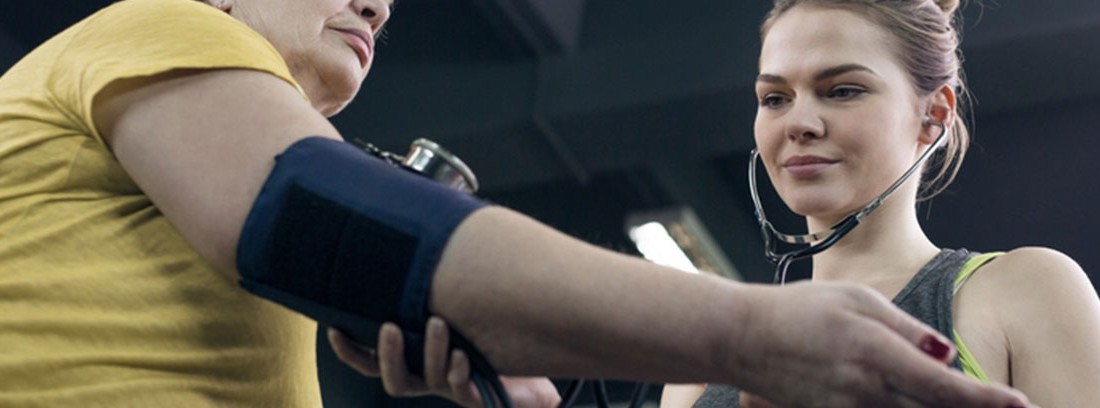Hypertension and exercise

When our body does not move, not only the joints and muscles can degenerate but our "motor", the heart, the same thing happens. So much so that leading a sedentary life increases the risk of HT by between 35 and 40%. If we take into account that 24% of the population is sedentary, the importance of promoting the practice of exercise is understood.
A silent disease
It is important to bear in mind that it may not give symptoms or symptoms and instead be affecting the kidneys, brain, heart and blood vessels.
It may be that the person is well and in a routine check-up or for some other reason, the tension is checked and high values are found. In this case, what you should do to know if you suffer from hypertension or not is to take the blood pressure several times consecutively in time (for example, every day for a week) at the same time and with the same device (to avoid fluctuations).
The diagnosis will be hypertension when the figures are above those currently considered normal (140 mmHg maximum and 90 mmHg minimum).
Physical activity as an ally
The practice of generally reduces the heart rate and blood pressure. By the mere fact of exercising regularly we already obtain these benefits.
Before starting a training program, it is recommended to undergo a physical examination with a stress test to assess the current state of health. Something that is even more advisable if you have hypertension.
Whether or not you are trained, whether you have previously exercised or not, our body reacts with modifications at different levels, the so-called “cardiovascular response to exercise” appears. With this, what is sought is to provide the muscle with oxygen and the necessary contributions so that it can react correctly when requested.
At the beginning, what increases is the heart rate and we will notice that the heart accelerates as we increase the intensity and the same happens with blood pressure. In this way we prepare for the activity that we are going to carry out.
What happens when you exercise?
blood pressure has two values, SBP (systolic or maximum) and DBP (diastolic and minimum). With exercise, the one that initially increases is the SBP, while the DBP should remain close to the initial values or increase slightly. During the activity, a maximum will be reached that decreases and returns to normal after a recovery period.
In people with controlled hypertension, tension behaves in the same way as in a person with normal hypertension.
These changes are absolutely normal during the so-called "dynamic" exercise such as running, walking, dancing, golf, aquagym ...
The same is not the case with "isometric" type exercise (lifting weights, for example). In this case, in addition to the increase in heart rate, the SBP increases but the DBP increases to a greater extent. Although the experts have not quite agreed on this issue, it is true that some point out that the response of blood pressure to isometric exercises in people with hypertension is greater than in "normotensive" people. That is why it is not recommended to perform this type of exercise.
When to practice
According to professionals, a minimum of two and a half hours of (walking, golf, dancing, swimming…) a week is recommended. Although to obtain better and greater benefits it is advisable to exercise three and a half hours a week. The most important thing is regularity and perseverance, so this total time is better to distribute it instead of doing it in a single session. For example, you can practice five days a week with 30-40 minutes of activity.
In addition to physical activity, other basic tips should be taken into account to keep blood pressure "at bay":
- Follow a diet low in salt, as well as reduce or avoid prepared or precooked foods, because they tend to have a significant sodium content.
- Reduce the.
- .
- Maintain a correct weight.
- Keep stress at bay.
- Exercising… lowers blood pressure.
- Ideally… do a minimum of two and a half hours of exercise a week.
- Also… diet low in salt, less stress, correct weight, not smoking and not drinking alcohol.
(Updated at Apr 15 / 2024)